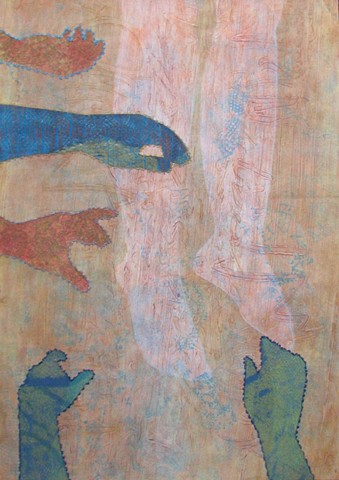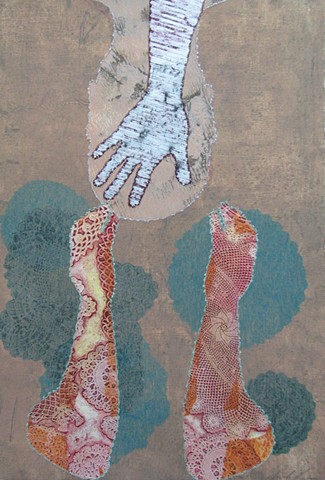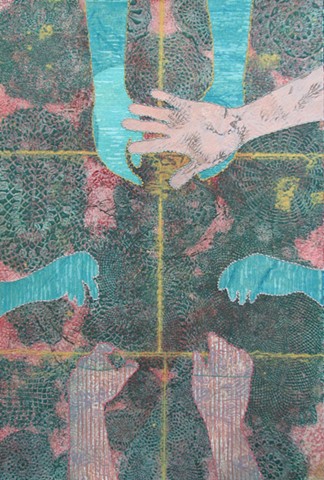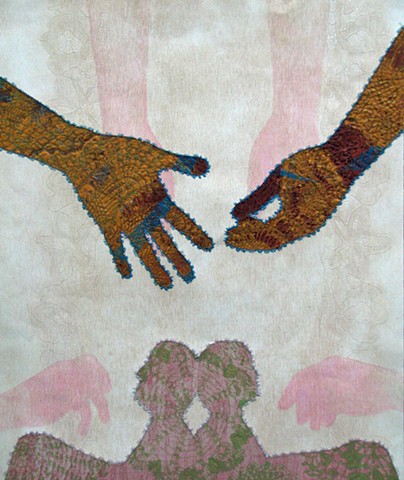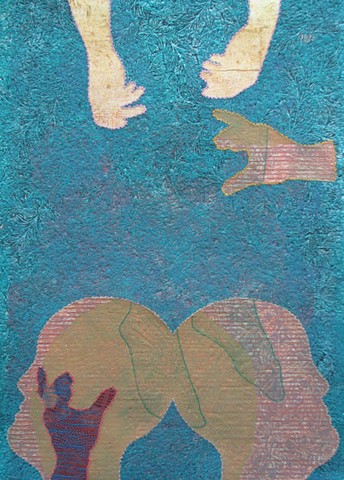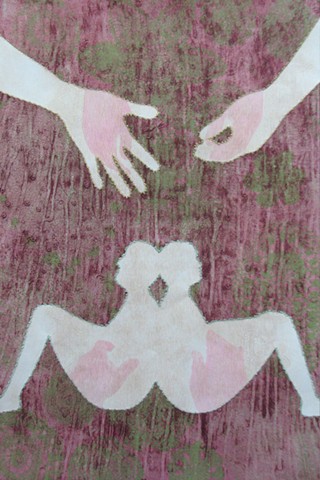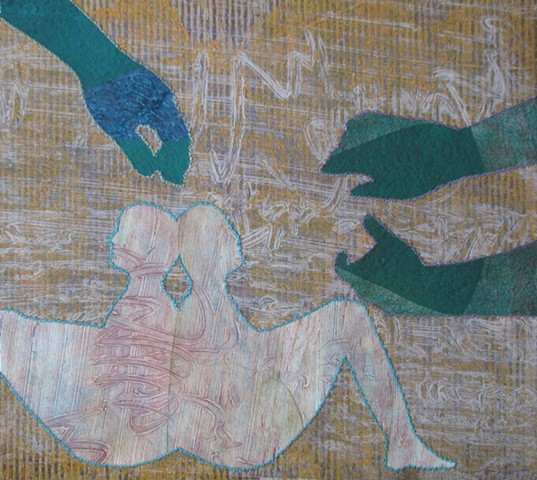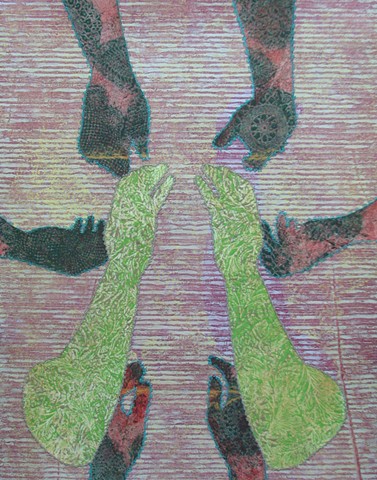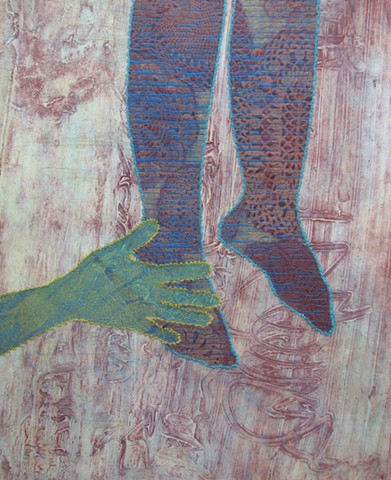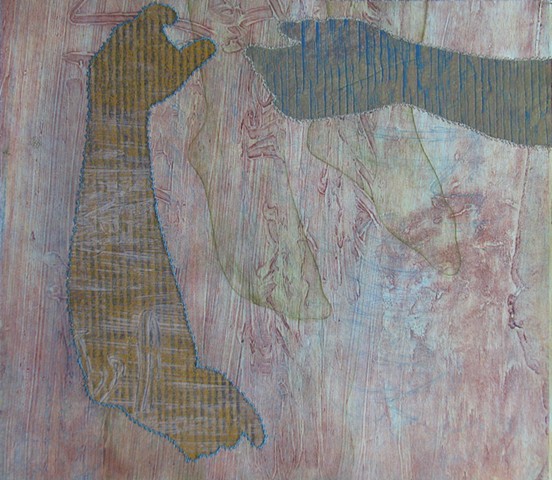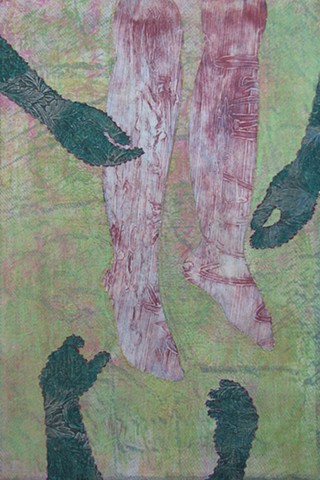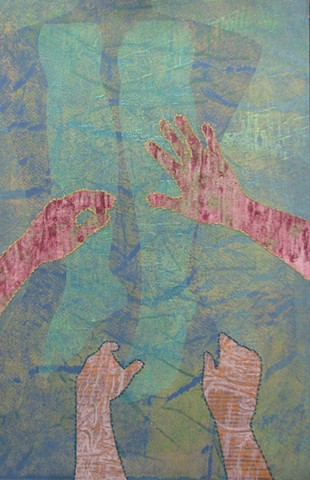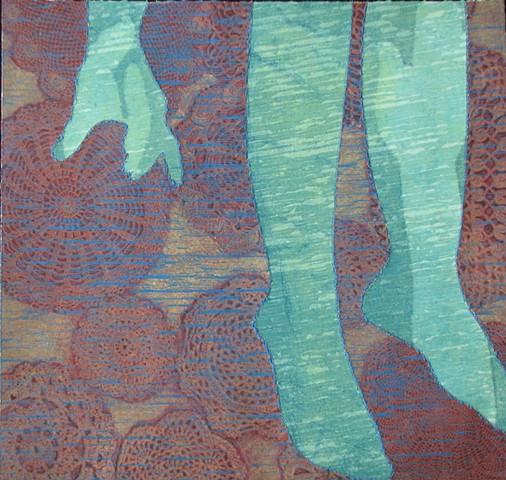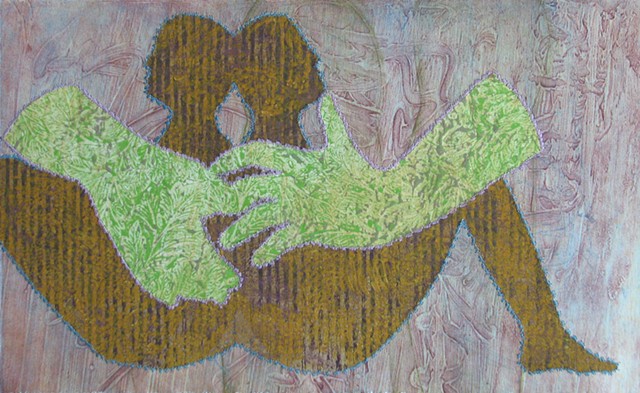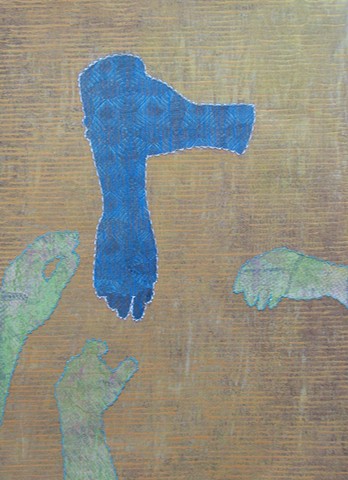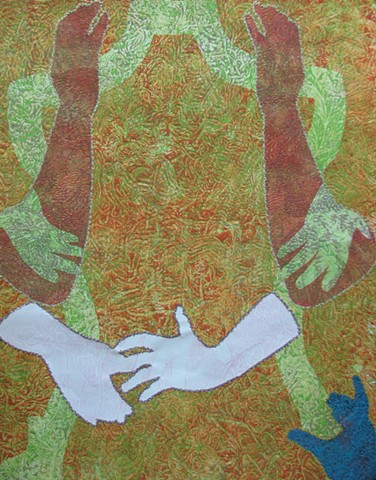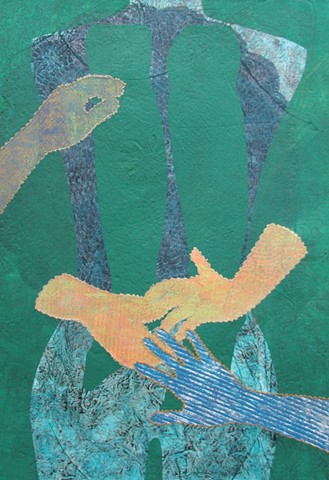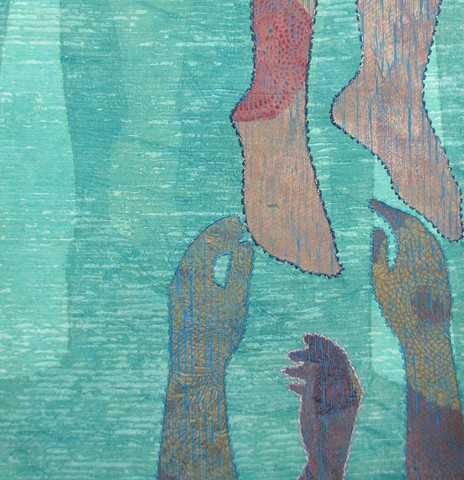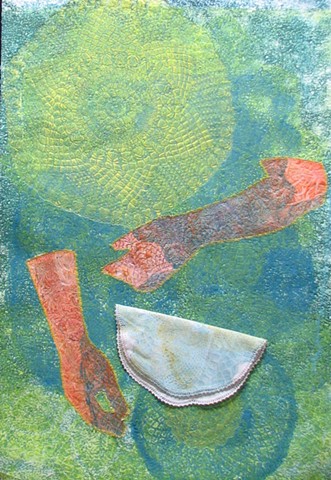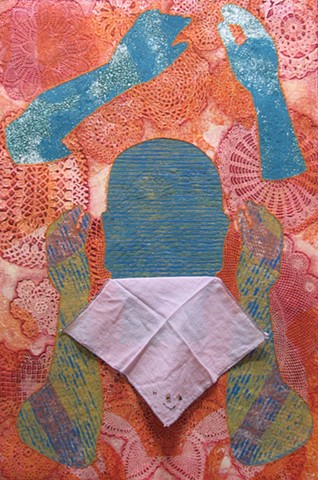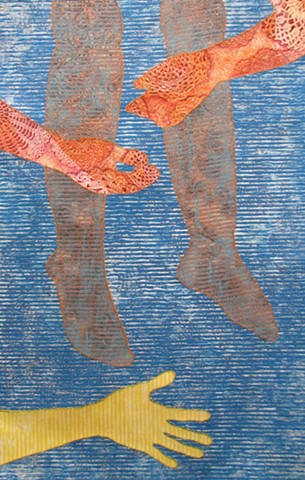Because
A collection of mixed-media collagraphs on paper
“The body keeps the score: If the memory of trauma is encoded in the viscera, in the heartbreaking and gut-wrenching emotions, in auto-immune disorders and skeletal/muscular problems, and if mind/brain/visceral communication is the royal road to emotional regulation, this demands a radical shift in our therapeutic assumptions.”
“Agency starts with what scientists call interoception, our awareness of our subtle sensory, body-based feelings: the greater that awareness, the greater our potential to control our lives. Knowing what we feel is the first step to knowing why we feel that way. If we are aware of the constant changes in our outer and inner environment, we can mobilize to manage them.”
- Bessel Van Der Kolk, M.D., from The Body Keeps the Score
This body of work is a long-time coming, having evolved over the past four years. Although the actual resolution and completion of the collection of works seen here was greatly precipitated by a recent and surprising epiphany: that these are, at their heart, about violence. They are about the bodily experience of violence, the mental experience of violence, the transference of the ‘cycle of violence’, and healing from violence. After coming to terms with this realization, and accepting what it could mean to fully express this publicly, the pieces practically resolved themselves.
Visually, one sees that the paper is heavily embossed, patterned with a rich array of textures and colors that are in some cases harmonious, in others, discordant. Forms are sewn into the picture plane with a visible and decorative stitch. Fields of texture, which evoke both microscopic forms as well as topographical maps, envelope both foreground and background, resulting in a flattening of space that we cannot precisely relate to. The life-sized human forms, however – hands, arms, legs, torsos, heads – refuse to let the viewer distance themselves enough to remain unaffected. With titles inspired by Rebecca Solnit's essay 'Men Explain Things to Me', the works refuse to let viewers remain ambivalent.
We are all, to some degree, affected by violence. Bystanders, victims, perpetrators. Where does one end, and the other begin? I am the daughter of a survivor of sexual abuse. I have, as a child, suffered physical and emotional abuse. My oldest children have also suffered physical and mental abuse - by me. Recognizing oneself as a player in this cycle of abuse takes a great deal of support, healing, work, and sometimes, simply some dumb luck. From the beginning of my studies in art, my work has always been about the body. Nearly thirty years later, I may finally understand why.
